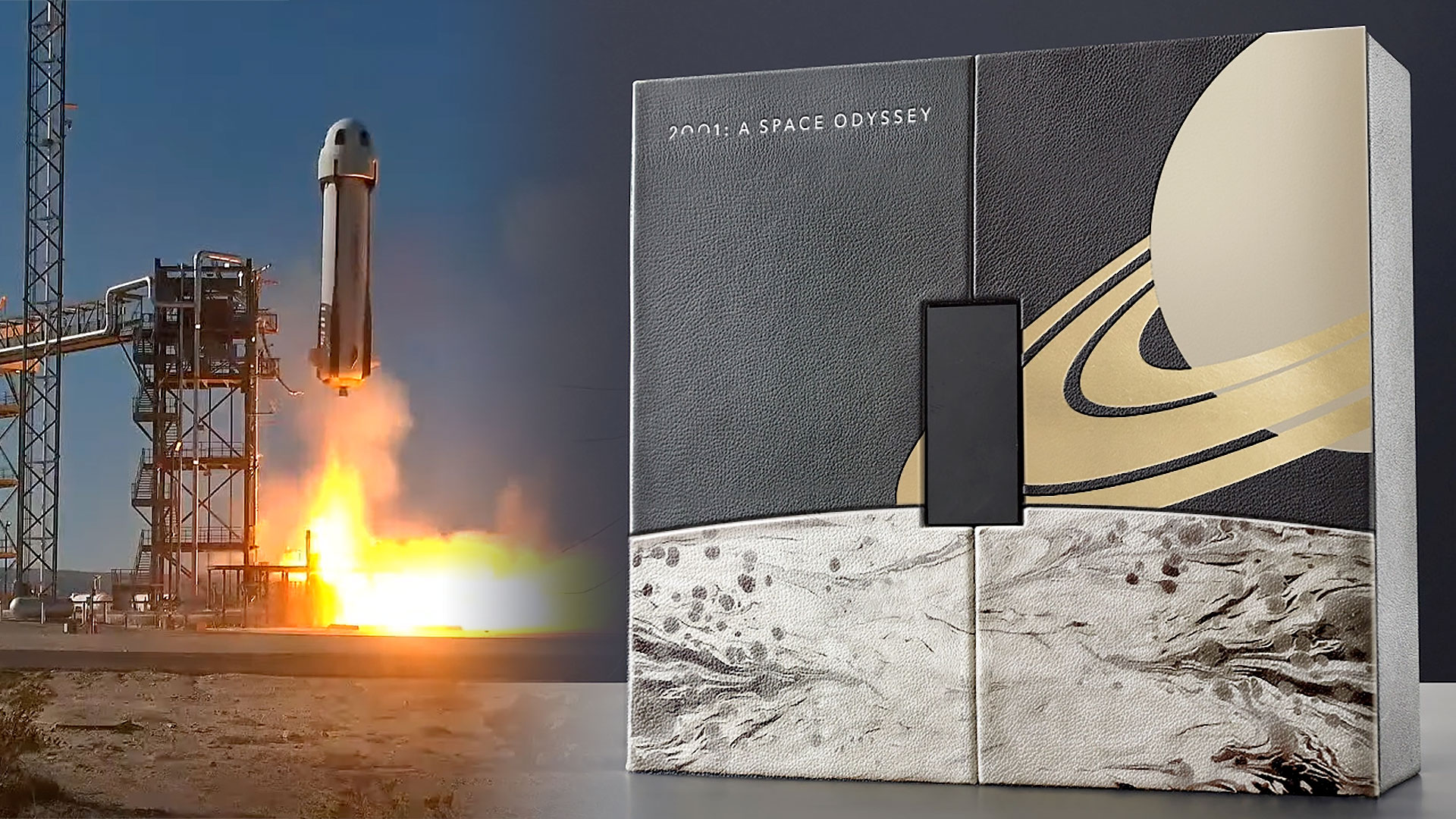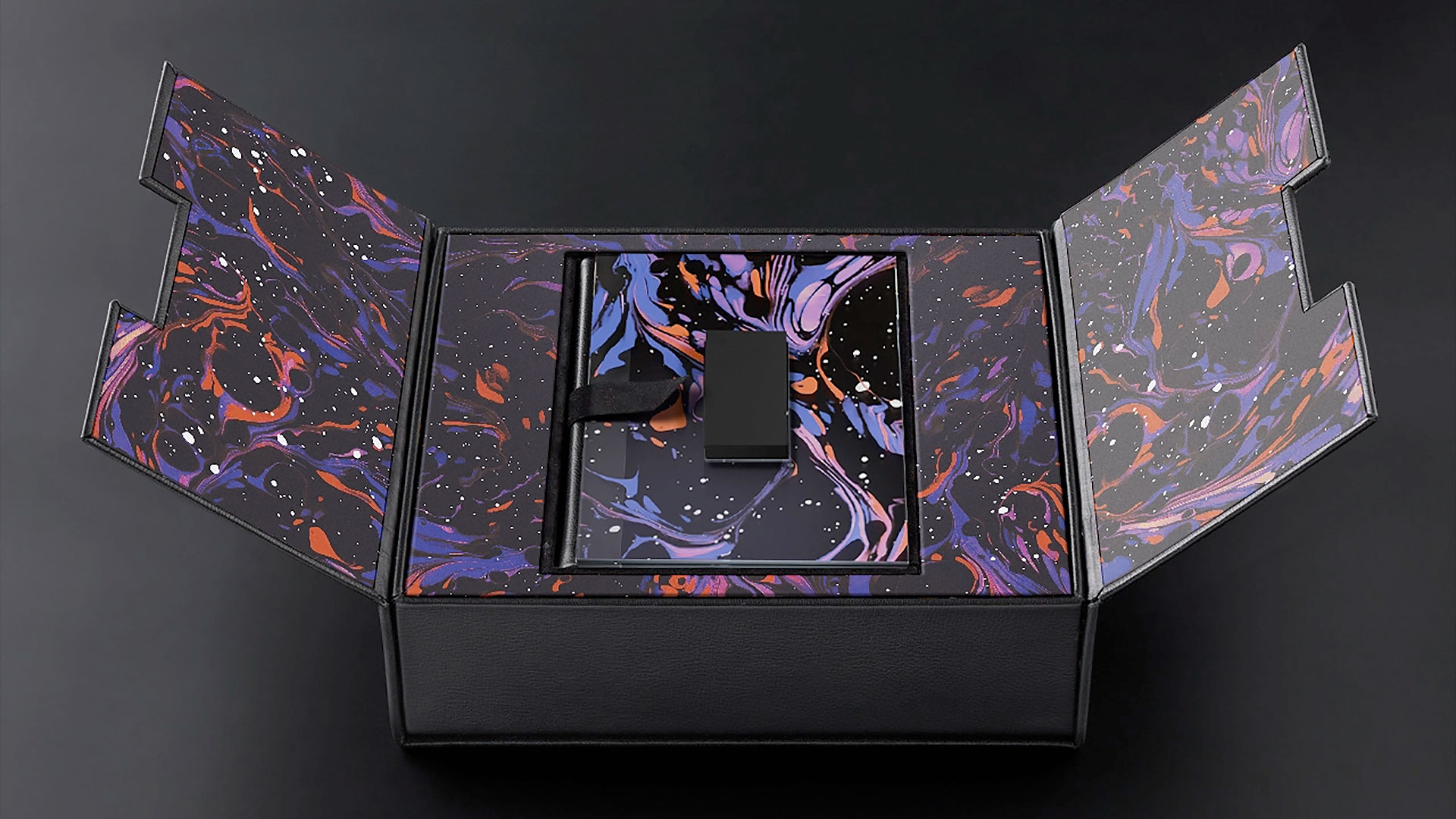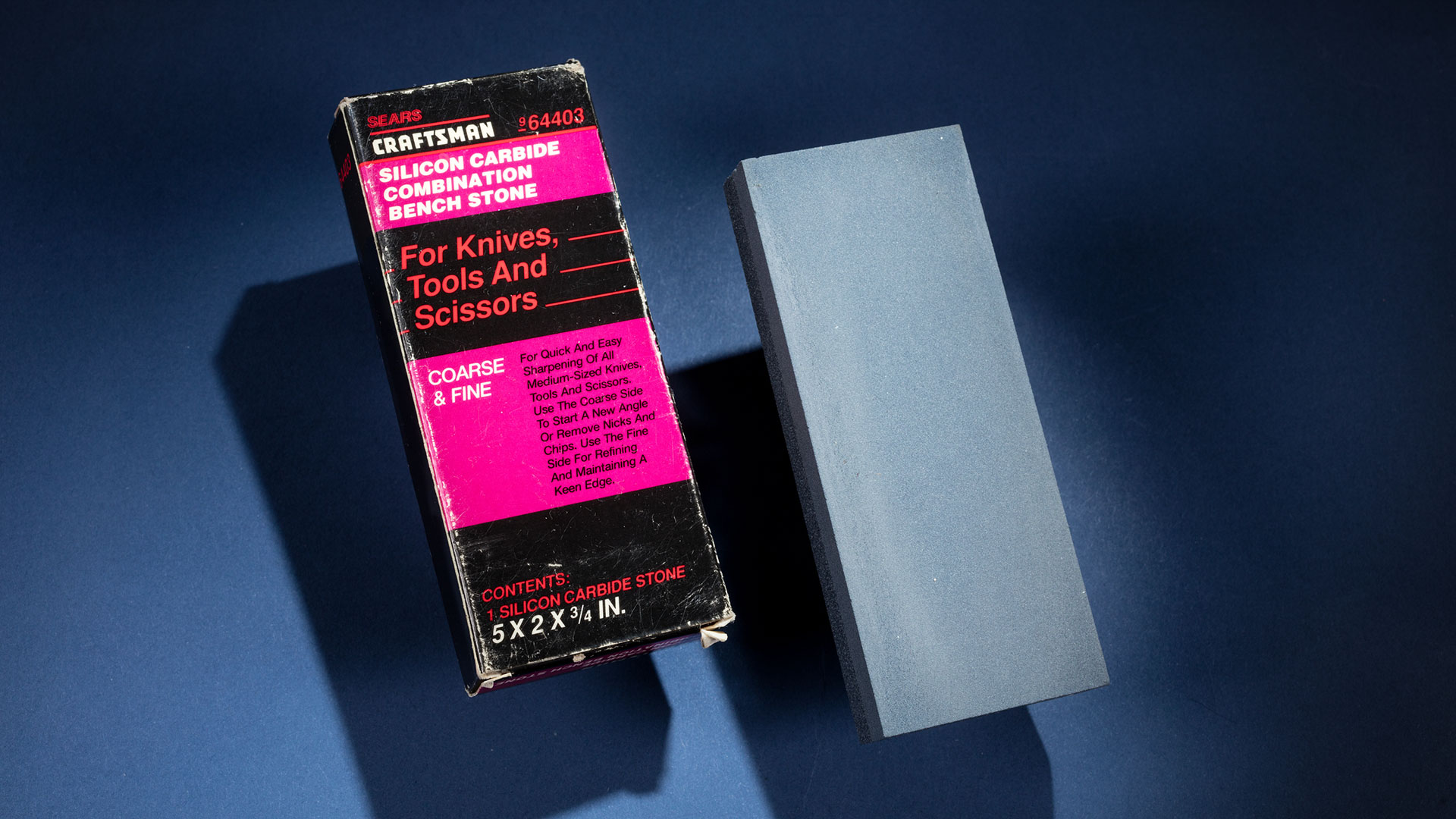
A small stack of miniature black slabs modeled after the monoliths in the epic "2001: A Space Odyssey" have made the trip into space and back on the first flight of Blue Origin's second human-rated launch vehicle.
The blocks, which were flown for Spacemanic, a satellite mission integrator, in partnership with the Croatian publisher Amaranthine Books, lifted off and landed on Wednesday (Oct. 23), packed on board the New Shepard capsule "RSS Kármán Line." Flying atop a new booster, the uncrewed craft and its sci-fi-inspired payload flew above the 62-mile (100 kilometers) boundary between Earth and space, which was first proposed by Hungarian-American aerospace engineer Theodore von Kármán.
"As the pages of '2001: A Space Odyssey' unfold, so too does a cosmic journey that transcends the confines of Earth and literature, reaching for the stars in a way only possible through the imaginative collaboration of Spacemanic and Amaranthine Books," the companies stated in a release.

Launched at 11:27 a.m. EDT (1527 GMT or 10:27 a.m. CDT local time) from Blue Origin's Launch Site One located near Van Horn in West Texas, the reusable New Shepard vehicle was powered by a single BE-3 engine, which fired for the first two minutes and 20 seconds of flight before reigniting after stage separation to slow the booster to just 6 mph (9.7 kph) for an upright landing on its legs.
The RSS Kármán Line capsule, having coasted the rest of way into space, completed its 11-minute flight under three parachutes for a soft touchdown not far from where it left the ground.
Related: Blue Origin launches 2nd human-rated New Shepard rocket, nails landing (video)
Now back on Earth, the miniature 0.4-by-1.6-by-3.5-inch (1 by 4 by 9 centimeters) monoliths will each be paired with one of only seven, individually numbered copies of "2001: A Space Odyssey: The Monolith Edition," a letterpress printed edition of Arthur C. Clarke's novel, which is signed by the team behind the project. Each book's monolith fits into the fused-glass cover, but can be removed and displayed separately as it is held in place by a hidden magnet.
As of the launch being completed, all but one copy of the $10,990 Monolith Edition was still available for sale.
In addition to the monoliths, the RSS Kármán Line and its booster carried 11 other payloads on the NS-27 mission, including two different navigation sensors being tested for Blue Origin's moon landing program, proximity operations sensors that flew as part of a NASA TechFlights grant and tens of thousands of student-designed postcards for Club for the Future, Blue Origin's STEAM (science, techniology, engineering, arts and mathematics)-focused nonprofit organization.
The RSS Kármán Line is Blue Origin's fourth New Shepard capsule to fly, after the cargo-only "Jules Verne" and "H.G. Wells" and the human-rated "First Step." To date, the latter has flown 43 people into space, including Blue Origin's founder Jeff Bezos, "Star Trek" actor William Shatner and Laura Shepard Churchley, daughter of the first American astronaut to fly into space, Alan Shepard, for whom the Blue Origin suborbital launch system was named.
The new booster is Tail 5, the fifth New Shepard rocket to fly since 2015.
One of the concepts that Clarke and the 1968 film's director Stanley Kubrick correctly predicted was the advent of commercial spaceflight. In "2001: A Space Odyssey," it is a space plane operated by Pan American World Airways (Pan Am) that transports passengers to and from a space station.

The Spacemanic monoliths are not the first replicas of the "2001" monuments to fly into space. In February 2001, NASA astronaut Thomas Jones launched aboard the space shuttle Atlantis with a copy of the book and a Sears Craftsman knife sharpening stone as a representation of the monolith.
"My book and miniature monolith — both veterans of a 2001 spaceflight — are now in the National Air and Space Museum collection," wrote Jones in a 2018 essay for the museum's website. "My STS-98 crewmates and I are gratified to have helped, in a small way, to recognize the importance of this landmark book and film. We look forward to seeing its expansive vision of space travel become a reality."
Follow collectSPACE.com on Facebook and on X at @collectSPACE. Copyright 2024 collectSPACE.com. All rights reserved.







